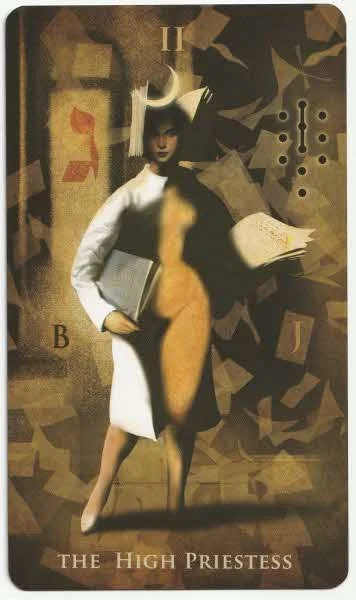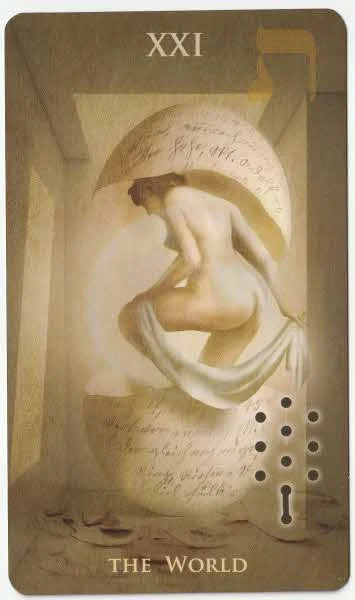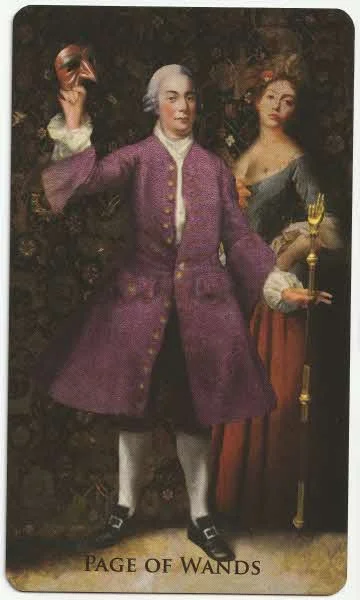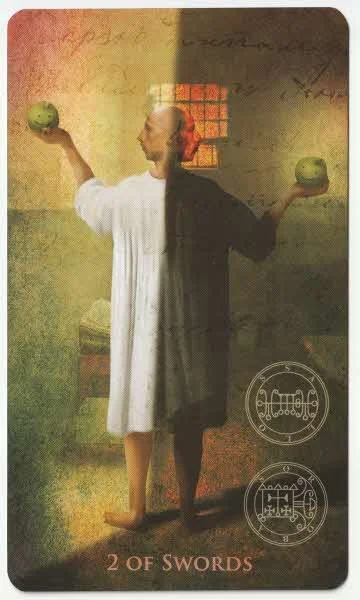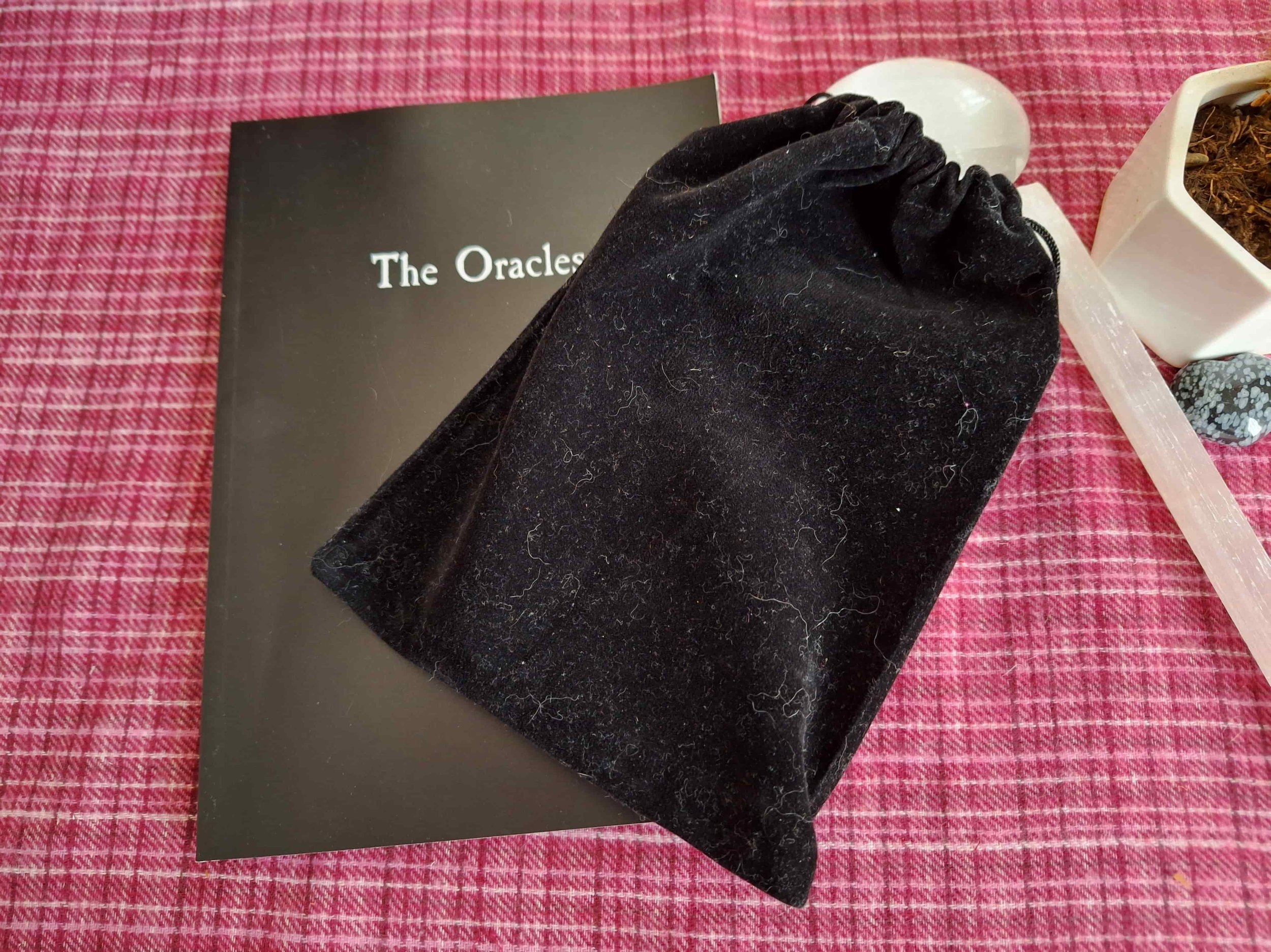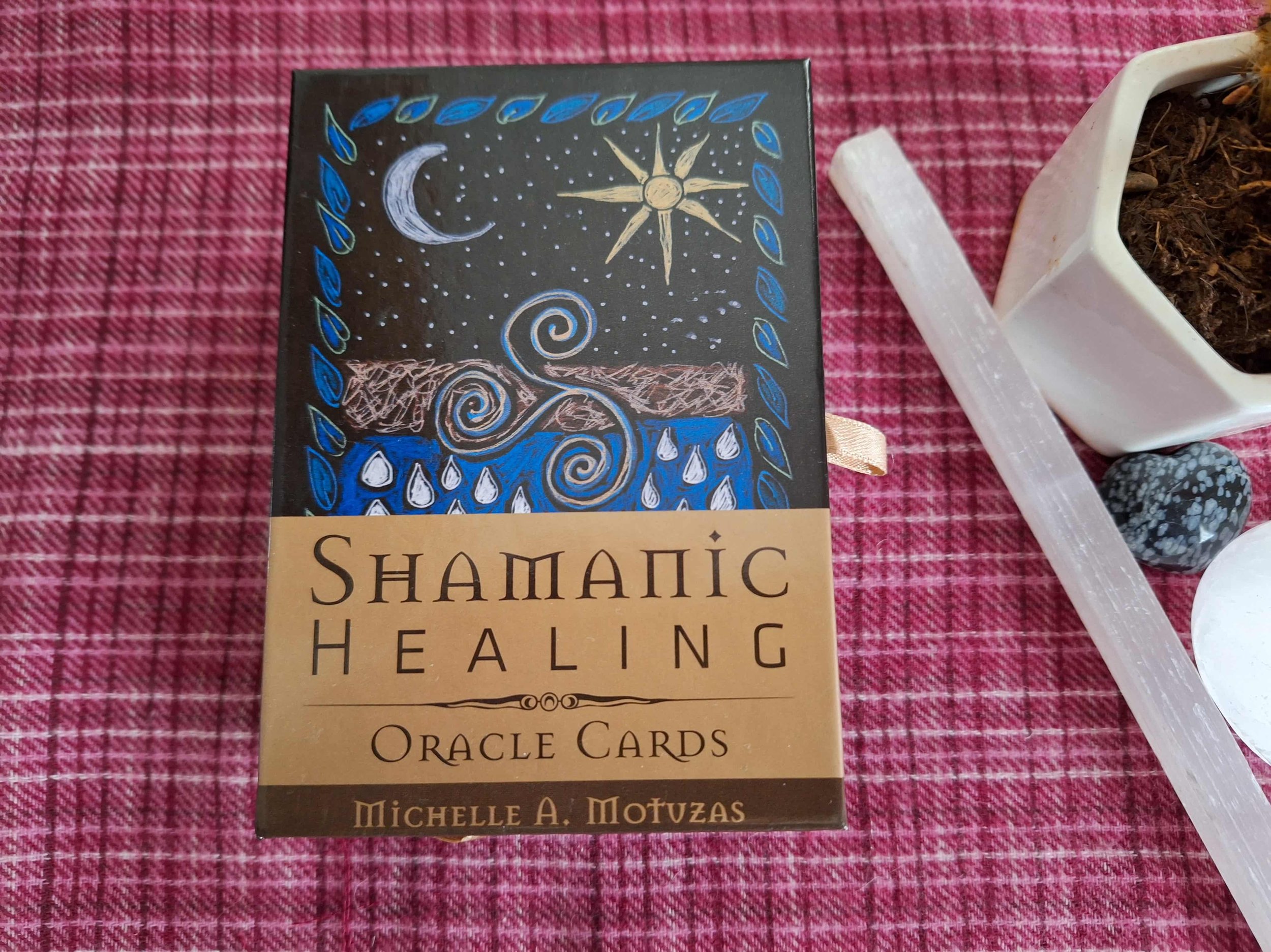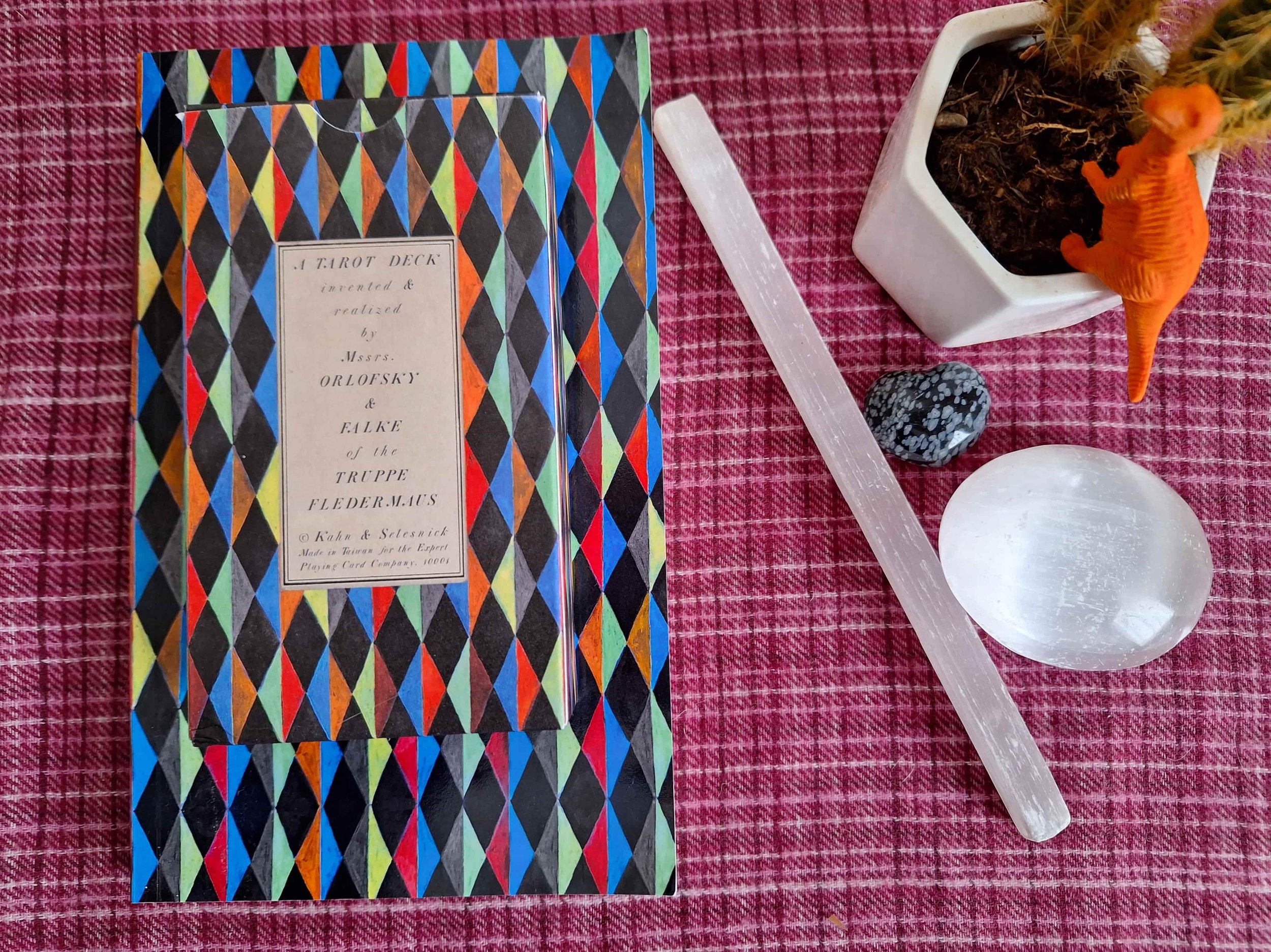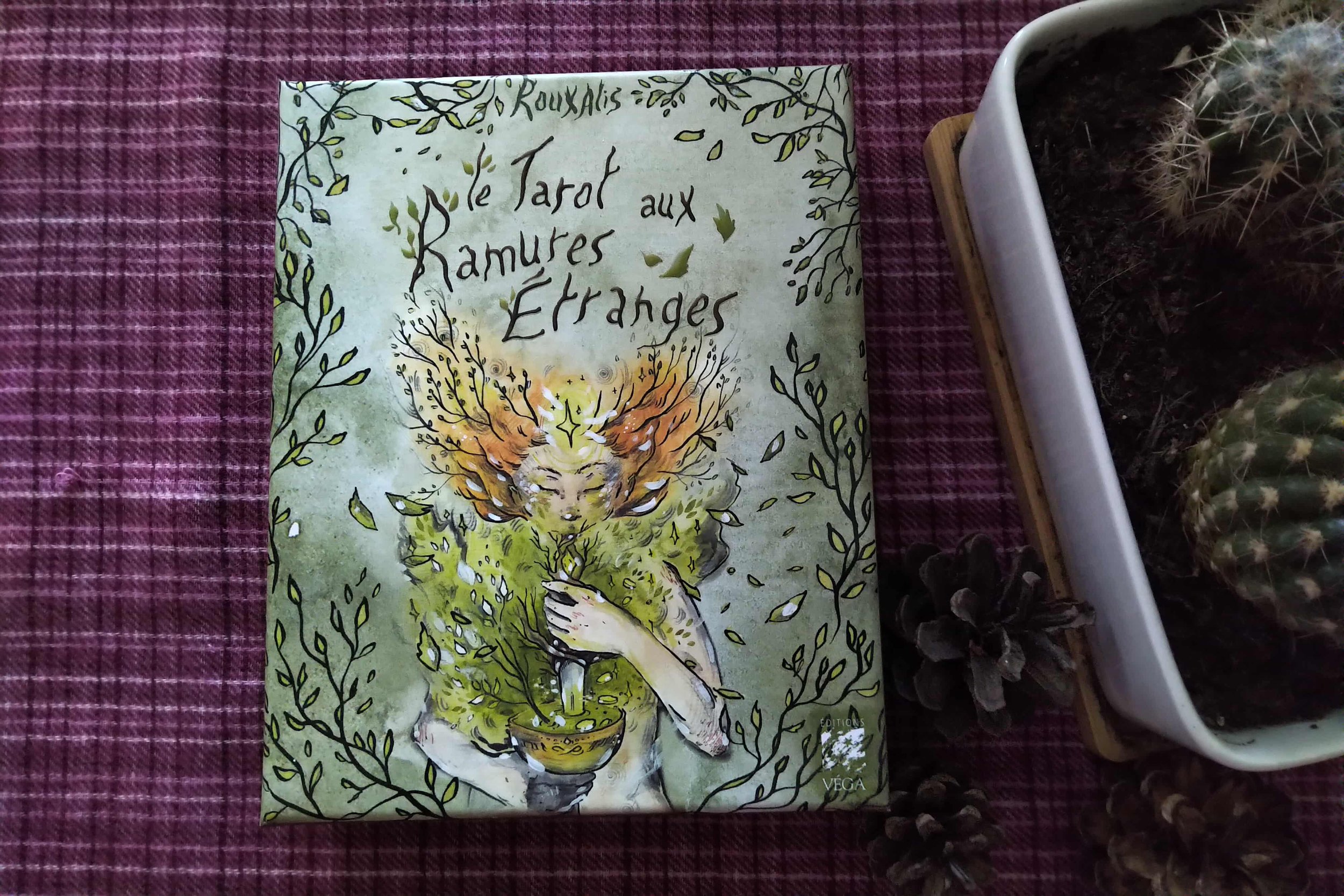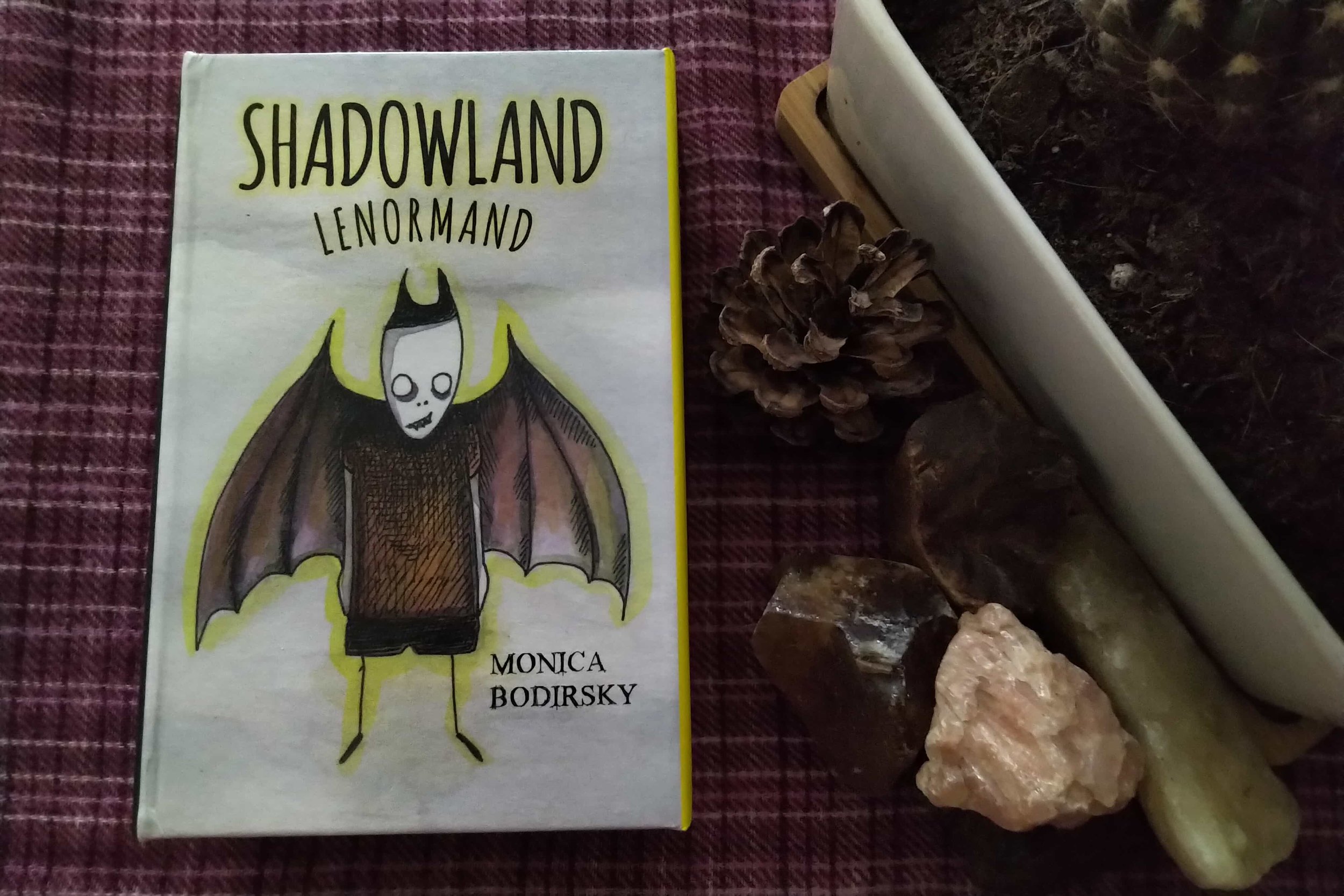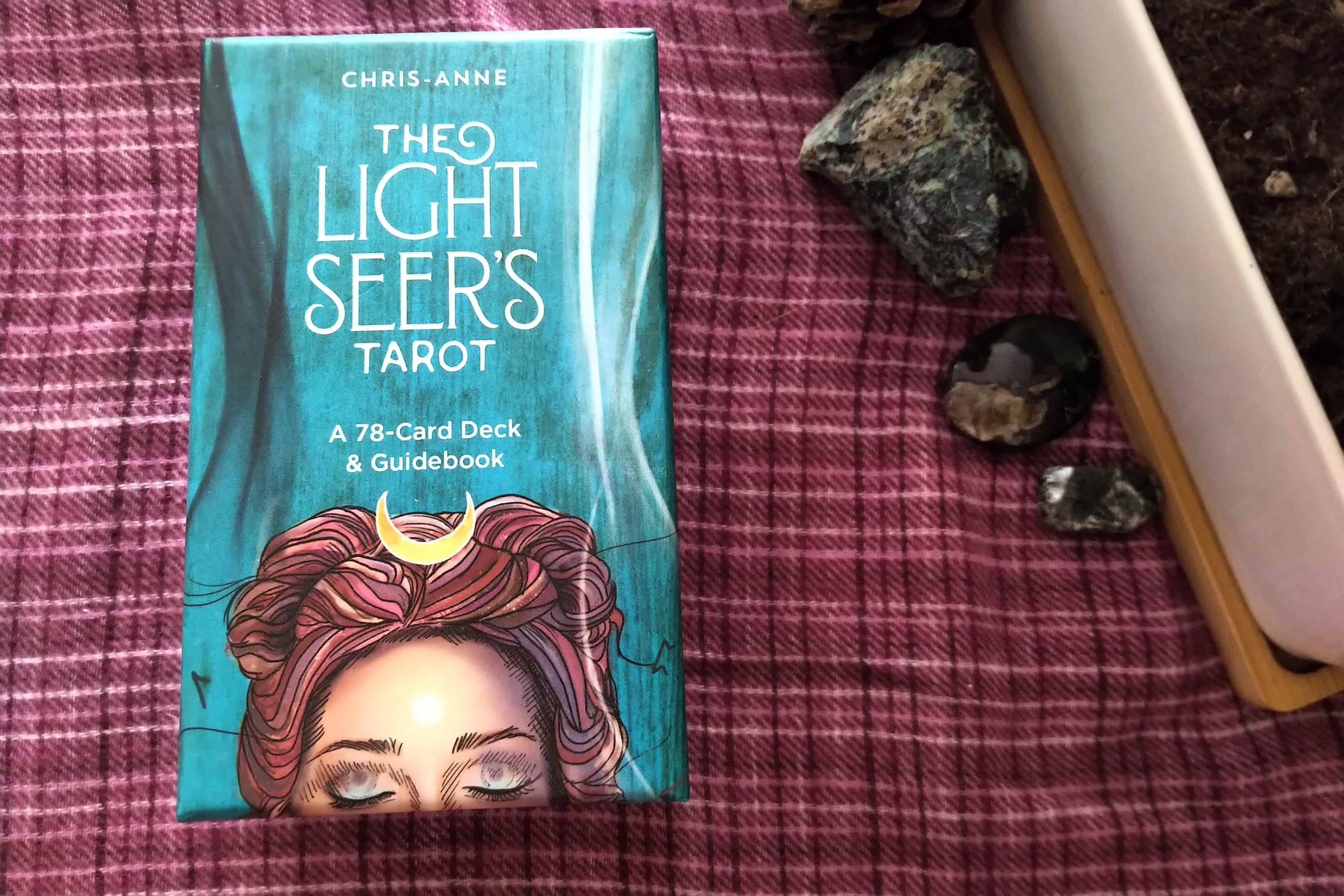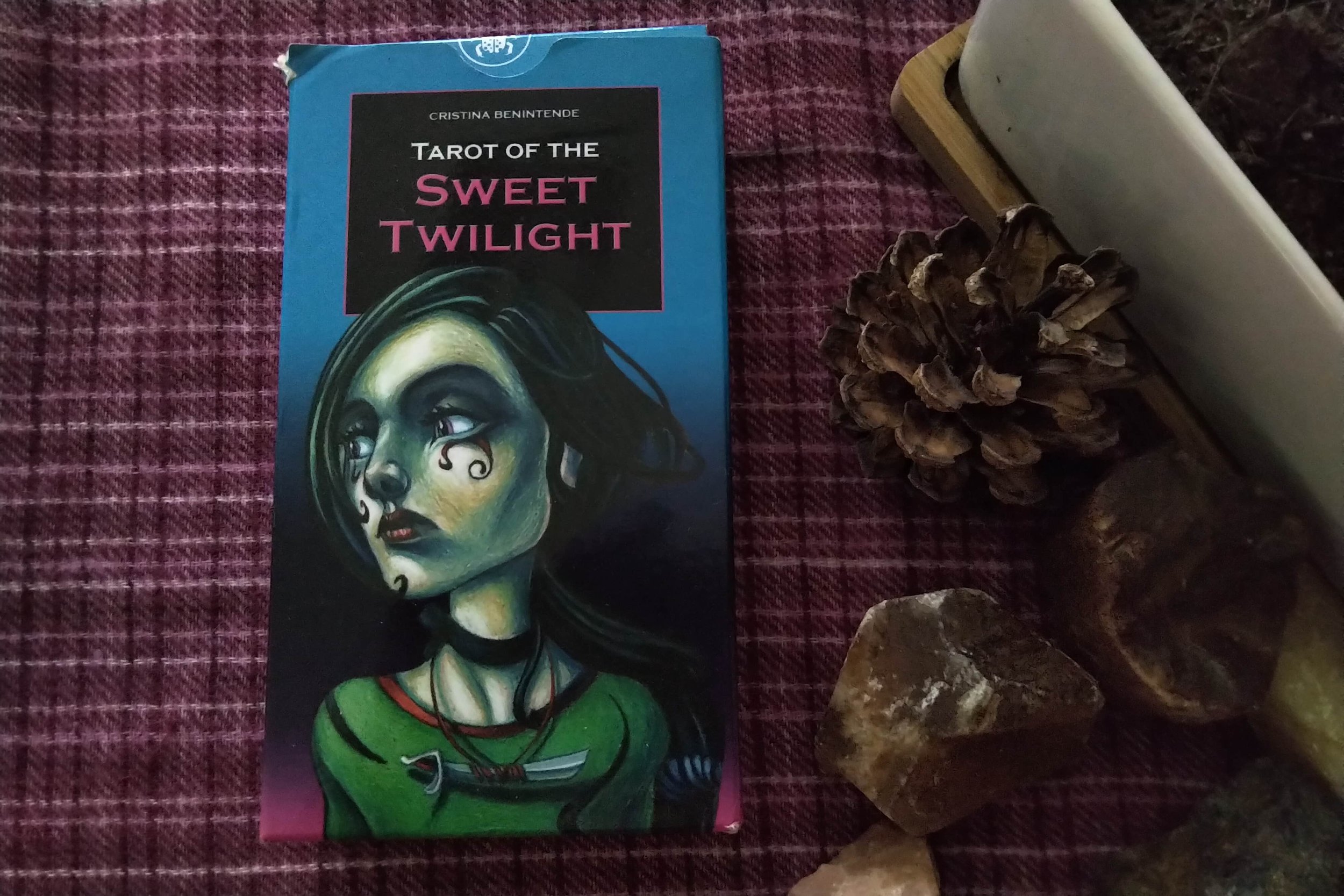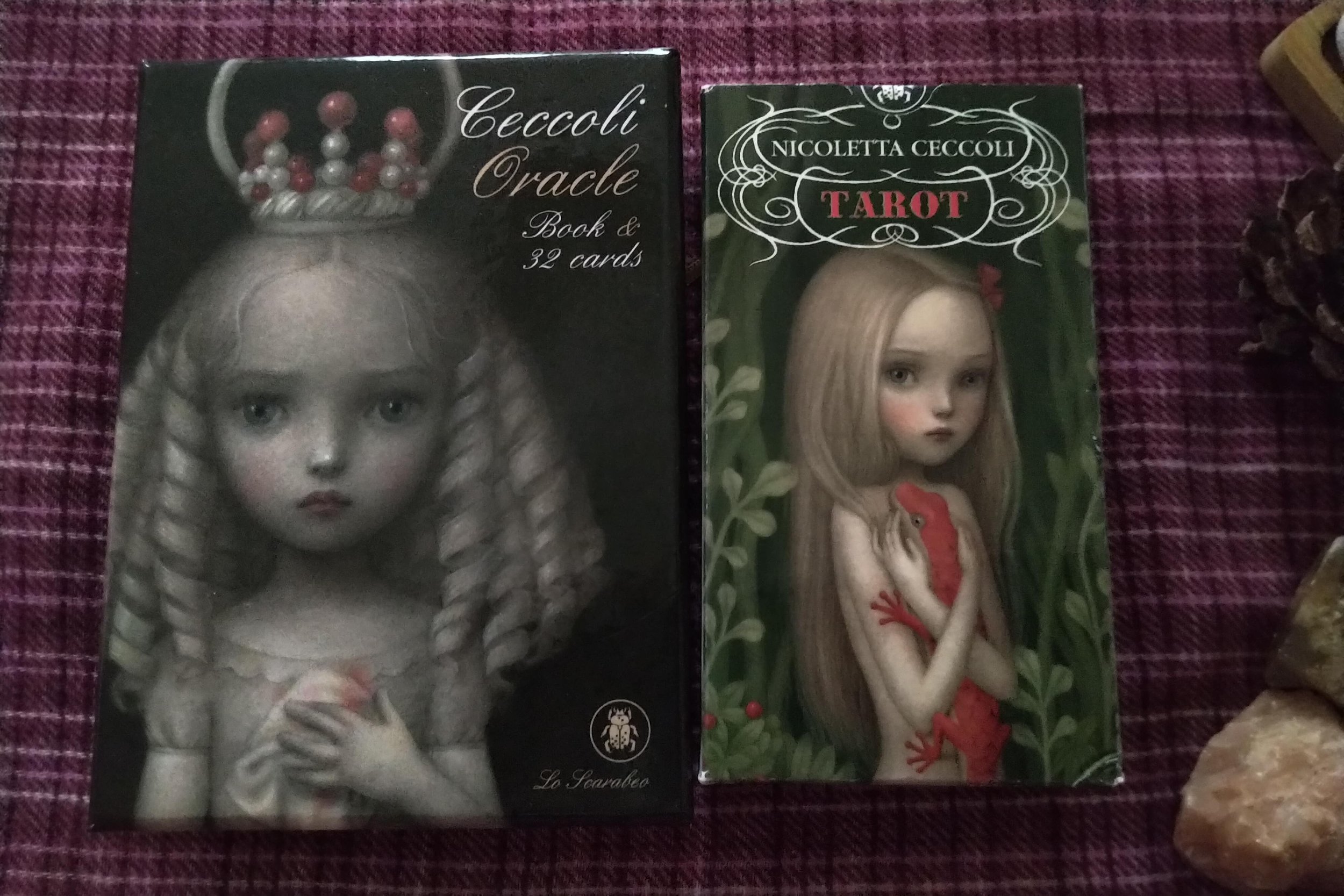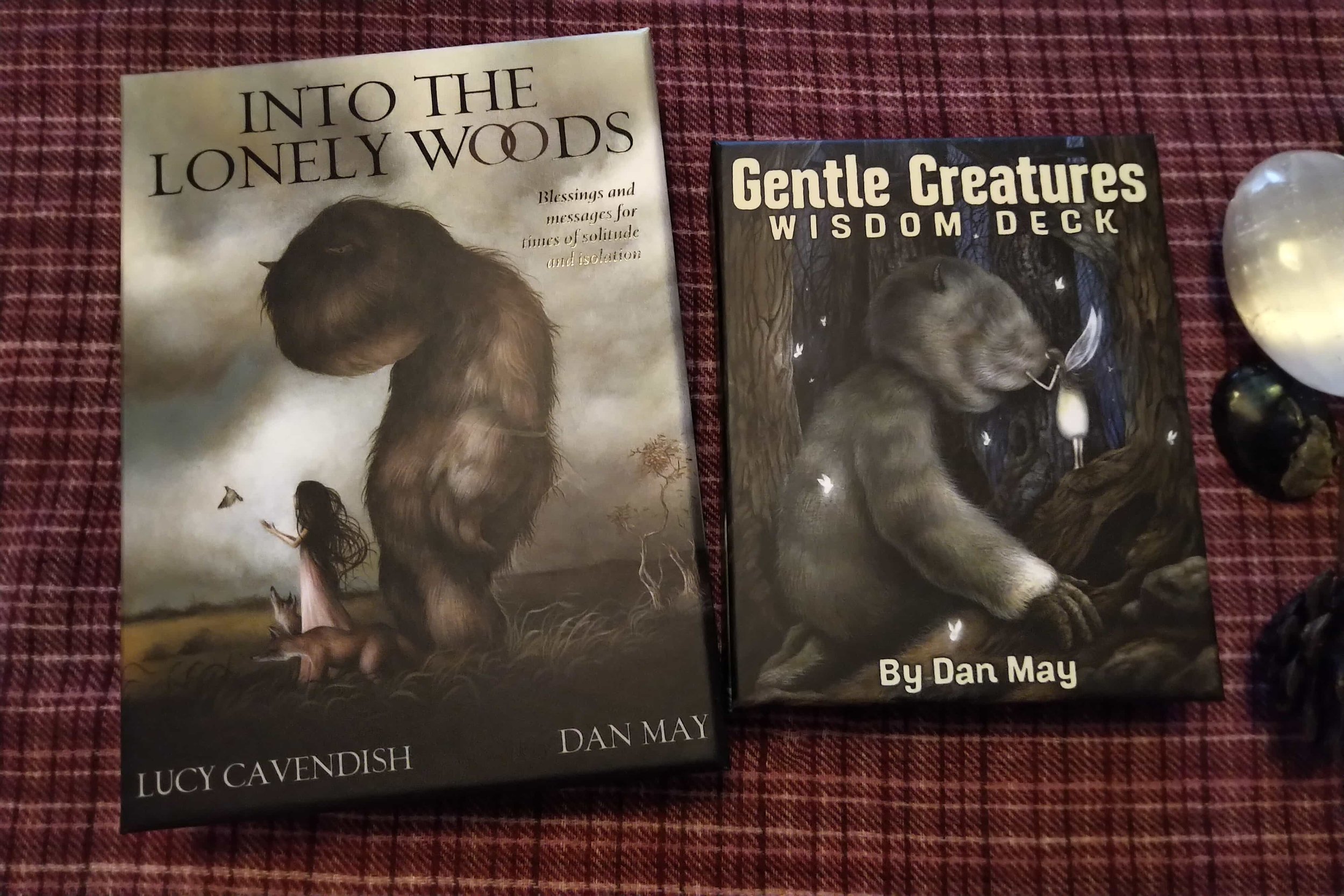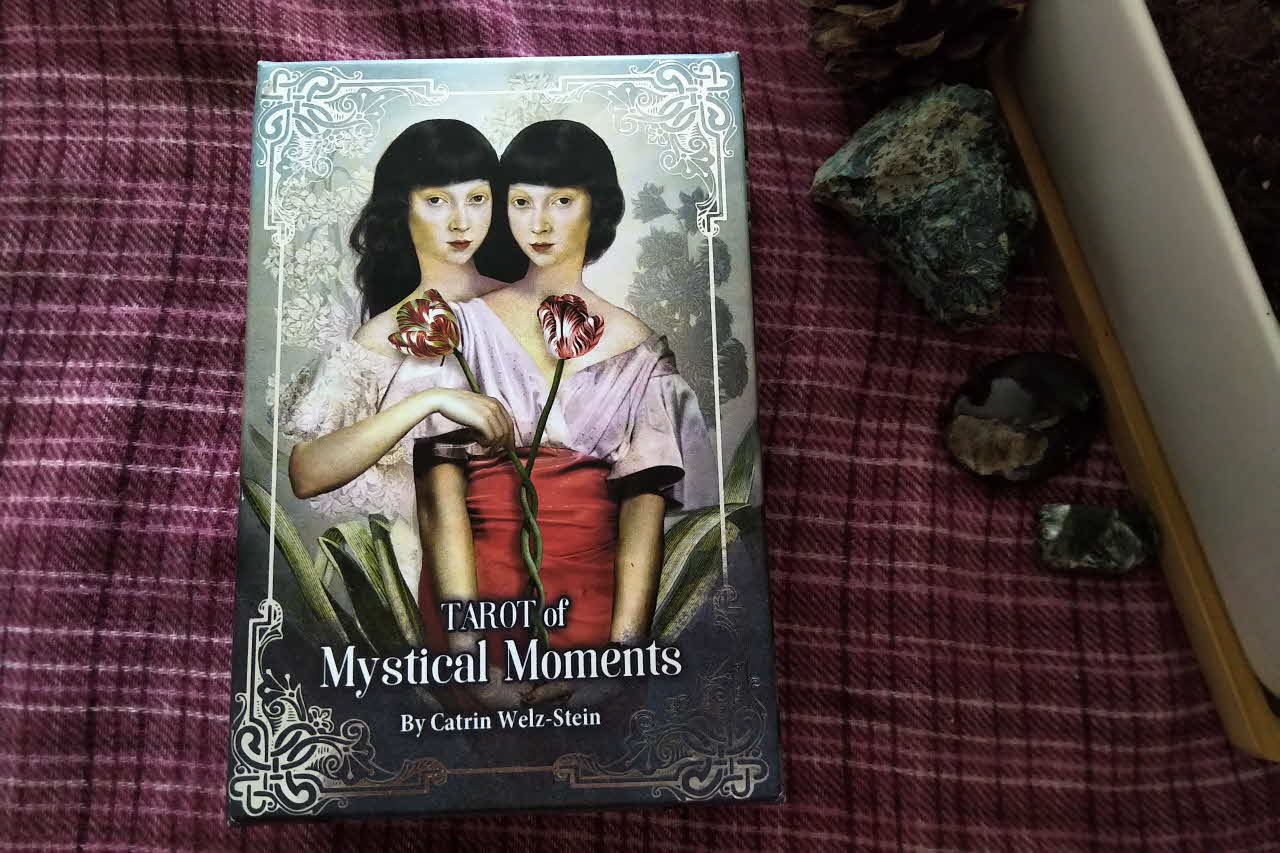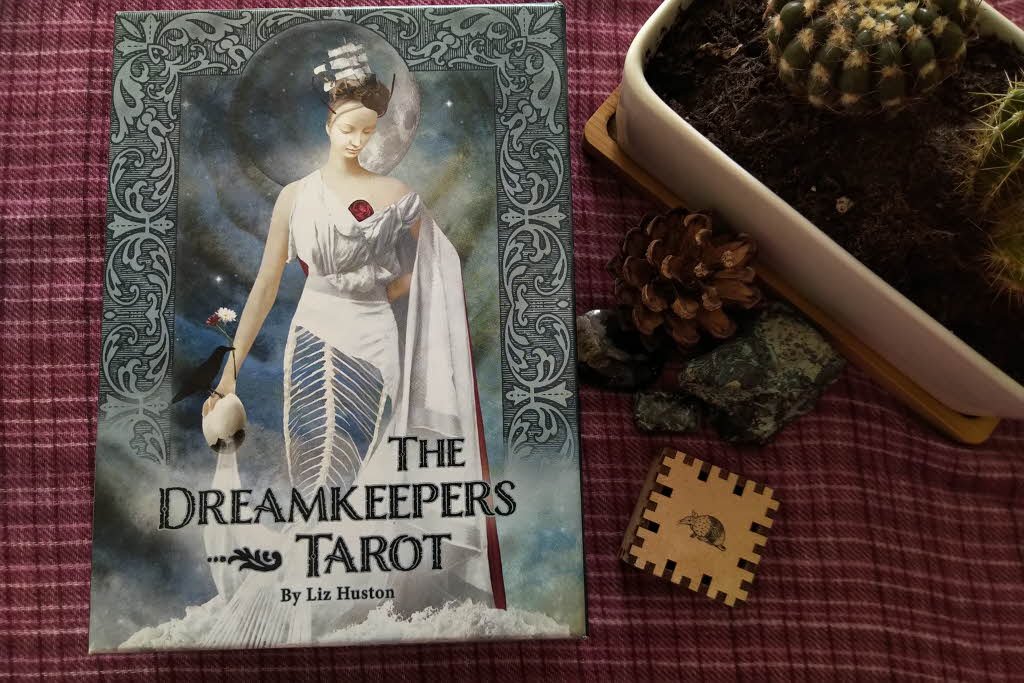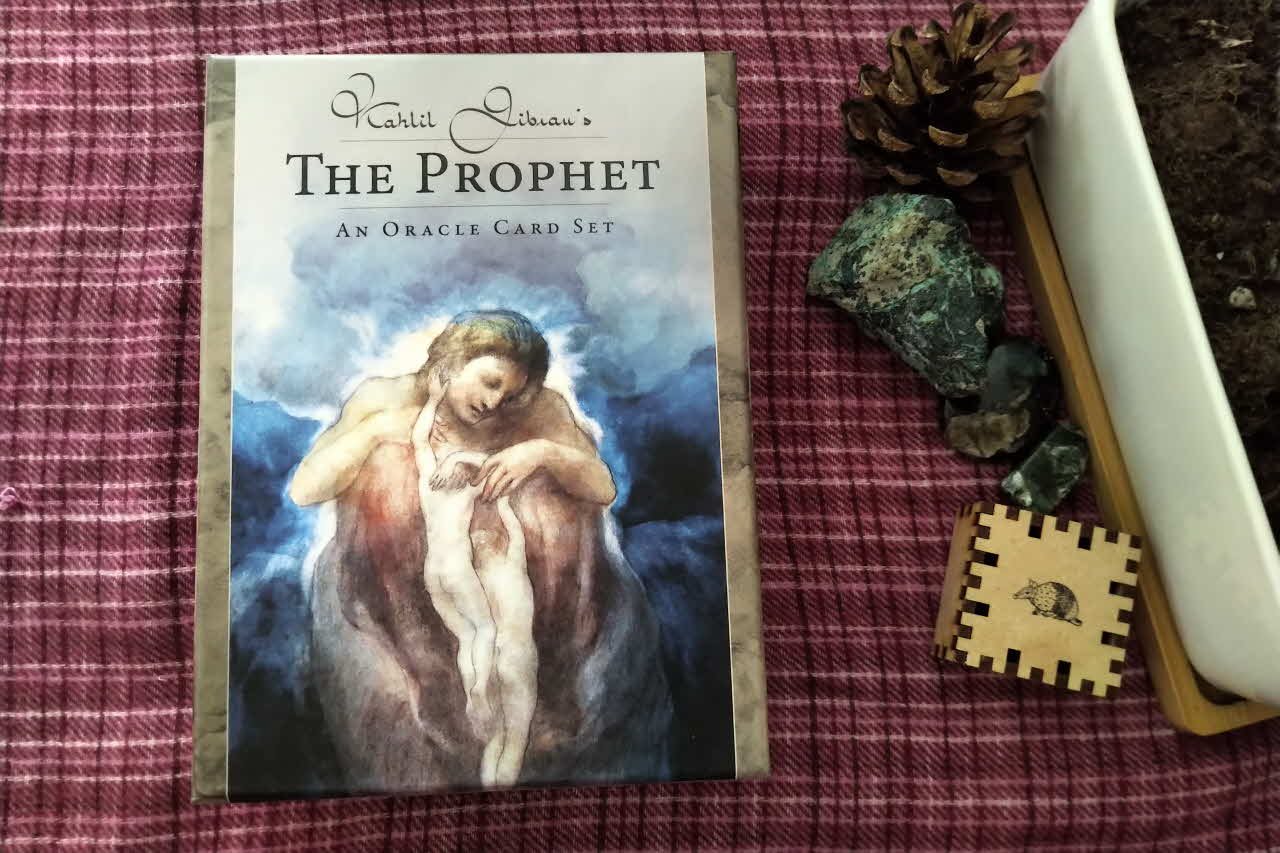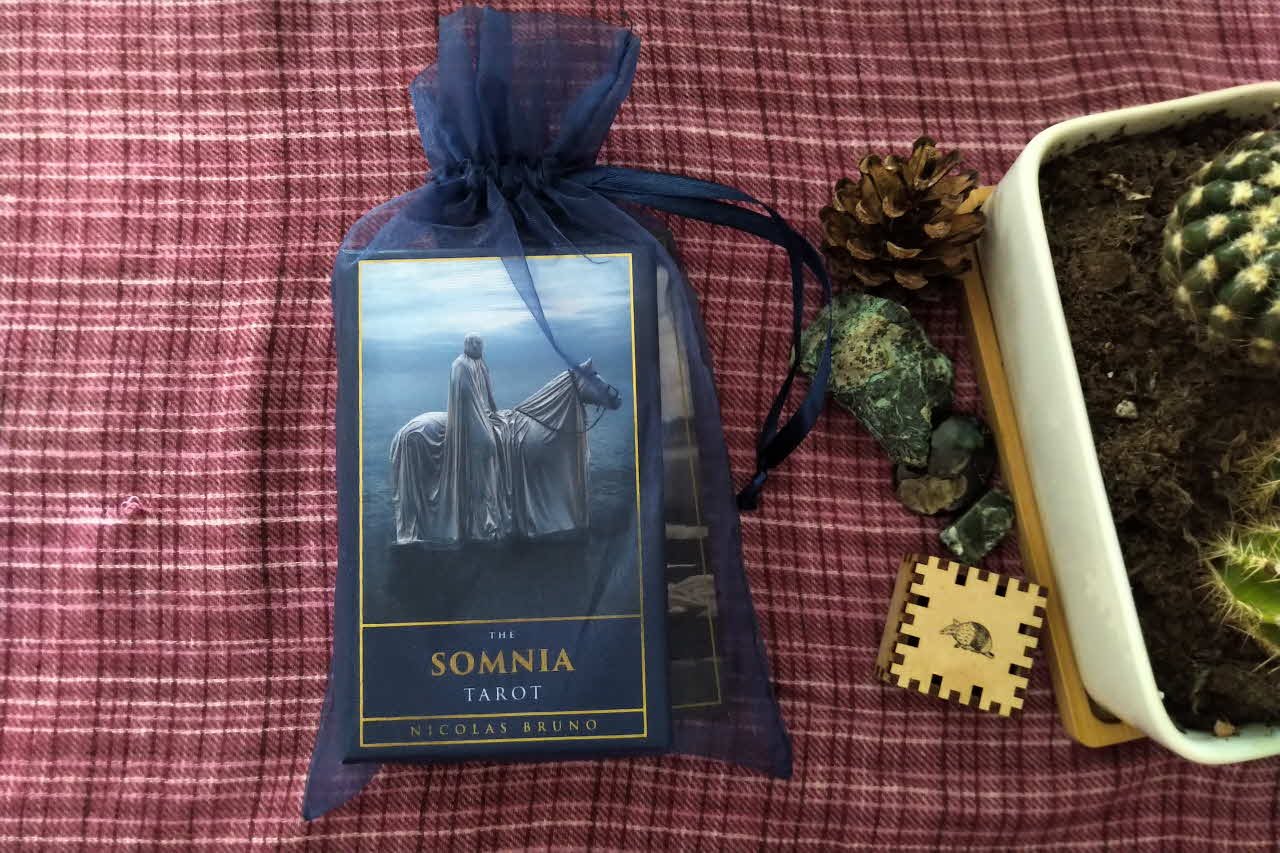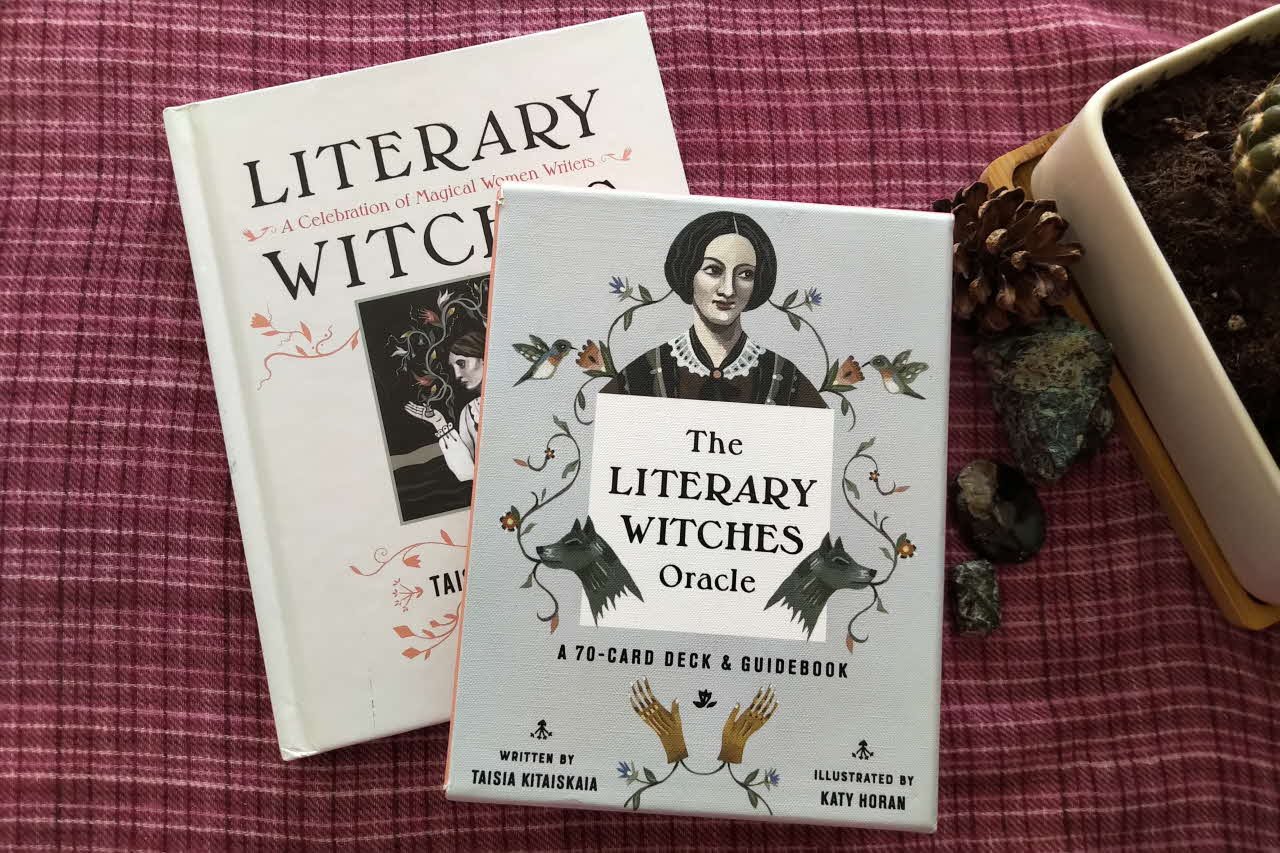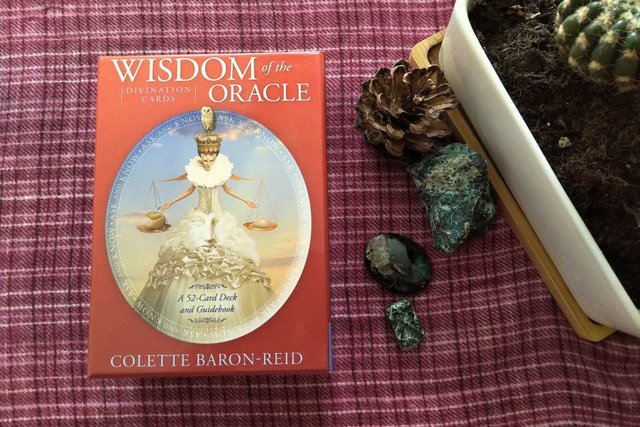Madhouse Tarot


The Madhouse Tarot was published in 2020 by artist Eugene Vinitski and author Elsa Khapatnukovski. The uniqueness of the artwork is consistent throughout, and the quality is excellent. The cards are a smooth matte finish and will likely be easy to shuffle. The black edging has a slight shimmer, but it pairs well with the textured back of the cards. The deck comes in a small study box, and the booklet, whilst part of the package, is slightly larger and is provided separately.
The booklet descriptions are helpful because Elsa has broken the information into separate categories. For the major arcana, we have:
General meaning
Events
The sphere of business
The sphere of finances
The sphere of emotions
Peculiarities of the mental condition
Outcome
The pile of cards I have beside me to analyse currently sits at twenty-seven, and I need to whittle it down further, or this post will take the rest of the year to complete. But that’s a good sign!
Major Arcana
The major arcana don’t always stick to easily identifiable expressions of the card’s meaning. The Fool is unlike any I have ever seen. I think it sets the tone for the rest of the deck very well, but I’m not sure how easy it is to interpret the tattooed-with-a-crocodile-arse of a man holding a skull with an owl perched on his lower back. The door is open; look closer, and you’ll see the ghostly presence of a woman standing behind it in the shadow. Is that the moon outside the door? There is writing on the wall; is it the writing on the wall? One thing omitted from the booklet is a description of the artwork. I would’ve loved that! The man is barefoot, suggesting innocence or possibly a primitive approach. Is the skull a reference to old knowledge? Thinking about it, we have lots of references to wisdom. The owl is symbolic of wisdom and understanding, and the moon is said to impart knowledge of intuition and feeling. For the General meaning, the booklet says a paradox, an offbeat approach to life, nonconformity of thinking, eccentricity of behaviour, intuition and strong gut feeling, intellectual tricks. The card’s introduction is too long to reproduce, but it’s written in the first person voice of an inmate of an old-style asylum and reveals hidden aspects of the card. The Magician stays within traditional lines and keeps the tools so often seen in this card. A mass of red lines in place of a man is a new twist, and I like how it gives me the feeling of energy. The following four cards also stay within a semi-traditional framework.
Then I feel a need to look closer at The Lovers. A man stands between two women, one of whom stands partially hidden by a curtain hanging from a privacy screen. The man wears a straitjacket, with his arms unfastened, and he stares upwards at a balloon with a drawn-on face and a pair of angel wings. It is easy to see the choice aspect in the artwork, and I wonder if the balloon symbolises a fragile state. The booklet mentions some revealing details in the introduction,
“One of them is good-looking and promises pleasure, the other one tempts with the freedom of death. What can I have here? Living in a miserable hell, and maybe a little bit of pleasure. And what about death? Does it mean liberation from the insane world? How miserable the choice is. Can I really make a choice if my hands are tied (with the straitjacket)? The implacable women are forcing me to choose one of them. But I so much want to choose something else! To turn into a smile and take off the ground between them as a balloon or a kiss. And if these harpies grab the string, to pop suddenly and fly to pieces in all directions, laughing loudly. But no, I’ll have to choose one of these sinister ladies, and give her a flower. I’m scared…Either one of them can break me and throw me away.”
As you can see, it’s an intense description of feeling stuck between two different lives. I like that Elsa uses questions to push the reader into thinking, especially concerning looking at death as a symbol. His hands are not tied in the straitjacket, so we can assume that he is more than free to make a choice. I love that he thinks about being the balloon, suggesting an underlying desire for escapism. The women are dressed appropriately for what sticks in my mind as the choice between sacred and profane. In the Tarot Dictionary and Compendium (1995), Jana Riley quotes Juliet Sharman-Burke “Indicates a relationship or love affair with some sort of trial or choice involved. Marriage may follow such a choice, or it may be what the old books described as ‘the choice between sacred and profane love’. ”
When this card appears in a reading, it’s nearly always clear the person has chosen shallow pleasure, a profane love, that leaves them feeling empty at an emotional level. Much less often, it would indicate boredom in a solid relationship.
I like Eugene’s interpretation of The Tower. The first thing that comes to mind is the suggestion of self-sabotage, followed quickly by wondering if it was foul play instead. The image is relatively complex; an open window with broken glass and the outer bars ripped off; someone felt trapped or imprisoned. Look closer, and you’ll see two pairs of slippers on the floor. Raise your eyes a little; above them is an outline of a heart with an arrow. The bloody handprint on the wall could be from a fight or self-inflicted from breaking the windows. But is the letter floating down from the window sill a suicide note? Or perhaps it’s a confession of some sort. Outside of the window are two birds flying. Whatever the scene depicts, it is clear it is not a solitary one. The Madhouse Tarot is not a soft deck, but the illustration and description are particularly heavy and intense. For the General meaning, the booklet says, “defeat, wreckage and shattered hopes, destruction, frustration and insult, deceit, split, force majeure, secrets coming to light; an unexpected, abrupt and often unpleasant awakening.” You certainly wouldn’t want to be seeing this card in a reading about your love life.
Because it’s the Madhouse Tarot, I must look at The Moon with its obvious connection to lunacy. The artwork blends traditional symbols with a couple of new ones. Interestingly, the image seems multilayered, a great visual representation of The Moon’s meaning in tarot. In the foreground is a man buried up to his neck in what appears to be sand; an unpleasant situation, but the sand suggests that nothing around him is solid or certain. His hands are free, although it would still take a tremendous effort to free himself. It’s also symbolic of being in a situation where the issue of free will may not be straightforward. We can see the traditional crayfish standing on the other side of a doorway, and as the moon’s light beams down, it casts a projection of itself onto the crayfish. The man’s field of vision is unlikely to see beyond the projection. It’s a perfect representation of a critical aspect of the card. The Events section in the booklet says, “concealing facts, destroying evidence, lie, betrayal, unfaithfulness, self-deception, interaction with wizards and fortunetellers, learning magic and wizardry, astral visions and contacts, occultism; the eve of important changes for the better (the night is always darkest just before the dawn), the process of fermentation.” It’s a sound card with plenty of visual clues to find hidden meanings.
Minor Arcana
The booklet interpretations of the minor arcana vary slightly in format compared to the majors. Elsa still gives the introduction to the card and follows up with
General Meaning
Events
Business
Finance, Emotions
Mental State
Result
In Goetia
The suit of wands is a curious lot. The ace is the card that is said to initiate action for the element it represents. For wands, it’s the divine spark of a new creation. I should probably apologise for the wonkyness of the ace of wands. This is what happens when you think you’re saving time by asking one of your kids to do some scanning and cropping. The card shows a woman on her knees praying to a snake-like candle, and a red, winged demon hops over the back of the chair. But I am most intrigued by the shadow of a man on the wall, cast from the candle below. Contemporary readers of this card will often jokingly call it the magic stick, and I think Eugene’s expression of the card is a very graceful one. I love the image of the man standing in the bathtub for the two of wands. It’s such a good representation, and for the General Meaning, the booklet says, “Strategy development, choice of direction, assessment of the situation, but also, “Napoleonic plans”.” The eight of wands probably departs from tradition the most with its depiction of a man creating the lemniscate symbol on the floor. A demon watches him from another place on the well-trodden path, although the man is obviously not paying him any attention. I think it captures the essence of movement but also repetition. The whole suit is strong from one through ten, and the court cards finish it off nicely. Giacomo Girolamo Casanova represents the Page, Diego Rivera is the Knight, Frida Kahlo is the Queen, and the King is Antoine Court de Gébelin. I note the court cards are the only ones wearing shoes.

The cups are another intensely creative suit. I particularly like how the ace of cups throws us straight into the watery aspect with a woman underwater, holding her hand to a disembodied hand that reaches down from above the surface. I’m rather fond of Eugene’s interpretation of the two of cups. Two people sit in an oversized water-filled cardboard box sprouting a few leaks. A cat in the background looks toward them. I appreciate that he expresses the complex undercurrents this card so often symbolises. The five of cups captures the essence of disconnection so often felt when under the influence of this card. A man stands in the corner, his head bowed. A demon is about to smack him on the back with a stick. In the foreground, we see a heart on a table next to a torn photograph. It’s a clear visual depiction of a lost love that is still having an impact. The man’s position and posture suggest he may be aware he did something wrong, or maybe an aspect of him feels punished. The six of cups is actually quite a sweet card. The couple dance to a record while a tiny demon plays DJ. Happiness is visible on their faces, and I wonder if there could be a bit of a prompt to pay attention to what you’re hearing. Or maybe it’s a suggestion to dig out some old music if you need to take a trip down memory lane. Like the wands suit, we have famous stand-ins for the court cards; Oscar Wilde is the Page, and we have Andy Warhol as the Knight of Cups inside a can of automato (n?) soap with a paintbrush in his hand. Moina Mathers stands in for the Queen, and the King is Jean-Baptiste Alliette.


The suit of swords continues with the same design strength as previous cards. The two of swords is interesting because it shows a man holding an apple in each hand; his Janus-face looks at both, but in a different light. The three of swords is surprising. I say that because, as one of the shittest cards in the deck, it’s surprisingly tame considering the overall theme of the deck. I mean, you can see the woman is traumatised because she’s on her knees, holding her head and visibly wailing. But, the broken cup doesn’t truly capture the typical heartache displayed by this card. The interpretation in the booklet is excellent and instead calls attention to the overly dramatic behaviour that can occur when a relationship ends. The seven of swords shows a man walking off with the heads of two others sat playing a game of cards. In other posts concerning this card, I caution that it can often mean someone wants to steal your thoughts. It’s good to see an artistic representation of that facet of this card. The eight, nine, and ten of swords are all perfect representations of the card’s meanings. Count Saint-Germain represents the Page of Swords. The Knight of Swords is Salvadore Dali. Curiously, we have Mata Hari as the Queen. And, for the King, we have the big man himself, the notoriously wicked Aleister Crowley.
Our final suit is the pentacles, known as coins in the Madhouse Tarot. Did you style yourself as the ace of coins, Mr Vinitski? I love how the artwork is spread chaotically over the floor; a reminder that creativity often comes from chaos. The floral arrangement adorning the hat could symbolise constructive ideas that manifest as something beautiful. Or possibly a need to give life to ideas. The three of pentacles strongly emphasises the need for teamwork as two men work on the angel wings of a third man — it’s also symbolic of working for the benefit of others. Needlework is a craft, so we could possibly further glean that the card meaning is also connected to craftsmanship. The artwork for the six of coins shows two men receiving unequal awards. A man dressed like Napolean stands in between them with a demon on his shoulders. It is he who gives out the gifts. I think this is a fascinating interpretation and emphasises the egotistical aspect of those who give to charity. The demon on his shoulders could easily represent the hidden motivations of those who profess to be charitable. Johann Georg Faust is the Page of Coins. For the Knight of Coins, we have Damien Hirst sitting in front of his formaldehyde shark while holding a skull with both hands. Sibylla Lenormand represents the Queen, and A.E. Waite portrays the King of Coins.
This deck was expensive, and I’m grateful I received it as a gift. I must point out that you can purchase it directly from Tarotmania at a lower cost than their Etsy store. The price difference was around £20, which is a significant saving. I think it’s a great deck and one that has the potential to be memorable. I look forward to using it, although I think I’d like to be specific with its use and maybe keep a journal of insights that come through with its use. The Madhouse Tarot is plainly not for everyone; the artwork and book are heavy and dark in places. I wouldn’t recommend trying to work with it if you know you’re vulnerable or if you’re easily upset. If you’re a fan of dark art and end up using these cards, you might never want to use any other deck. Ever.
Because the booklet gives meaningful information in a well-thought-out format, beginners would be able to learn with this deck. I think the only aspects of the booklet I’m unsure of are the Peculiarities of the mental condition in the major arcana and the Mental State section in the minors. I’d recommend caution when applying those to readings, whether for yourself or others.
The Madhouse Tarot positively screams consistency of quality in the design of the cards and the interpretations in the booklet. I think it was a thoroughly fantastic collaboration between Vinitski and Khapatnukovski, and I would happily buy other decks from Tarotmania. I’m eyeing up three other decks as I type.


